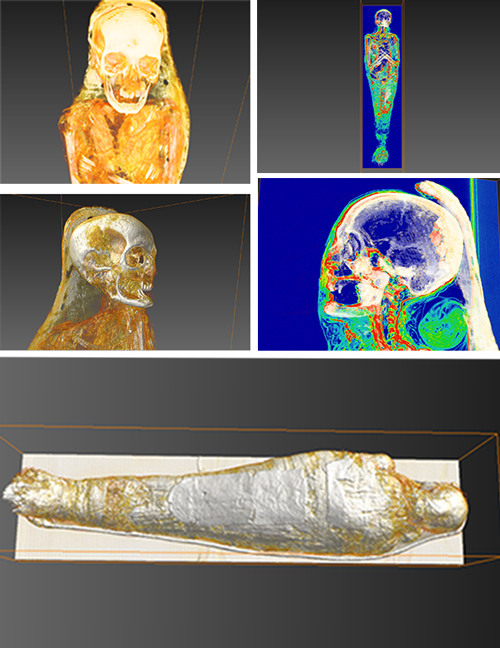AMSC Research, LLC uses Amira software to understand processes and rituals of Egyptian mummification

“Scanning is important, but it is really just the first step in an immersive exploration of artifacts” says Elias. Raw data from scans taken of mummies (or other archaeological subject matter) is delivered to AMSC Research as files in a language known as DICOM. Next, these are converted into a visually readable form for analytical purposes and to launch the creative modeling process.
Elias uses Amira software to analyze scan data. Mummies are biological entities, so apart from the usual forensic side of things (features having to do with skin and bone), they also have cultural elements that relate to their chronology and social significance. Culture is expressed in body wrapping, unusual textile structures, the distribution of resin and the patterning of amulets. Recent projects have included Sabina Malgora’s study of an anonymous Egyptian mummy in Meran, Italy, and the Milwaukee Public Museum’s mummies of Padiheru and Djed-hor. It was discovered that the latter underwent a surgical procedure known as trepanation.